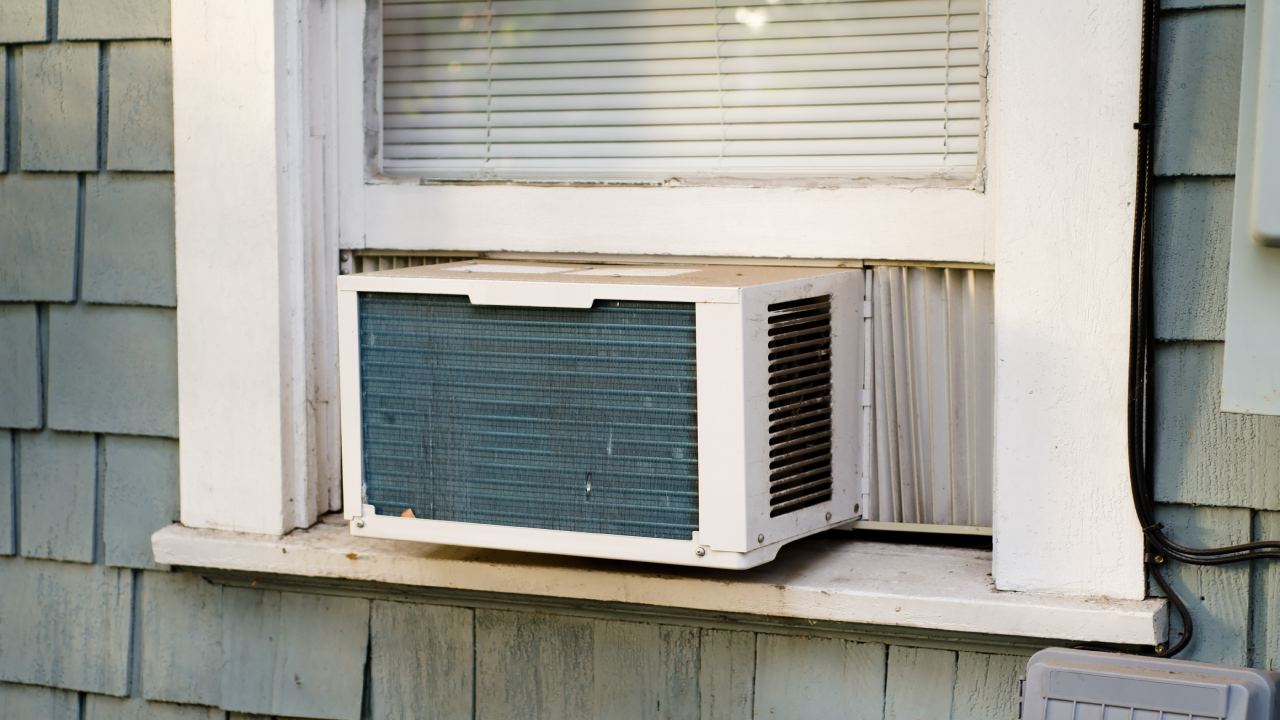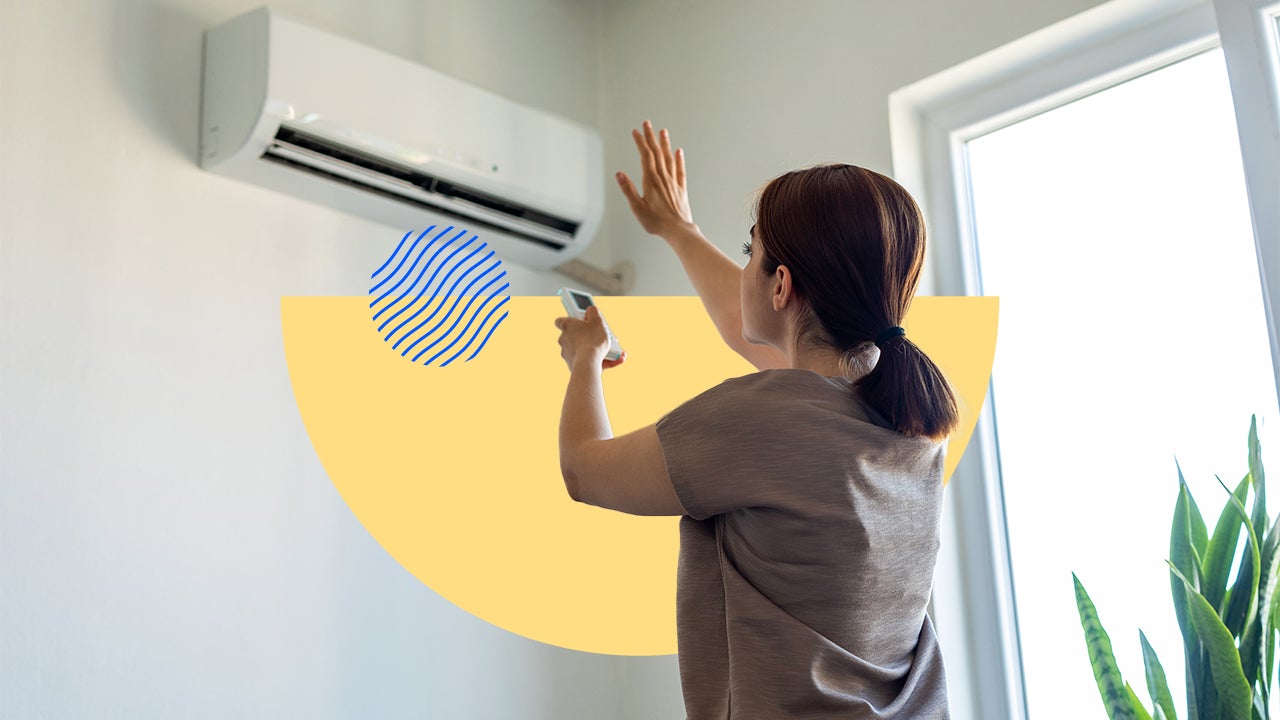How to install an air conditioner

Our writers and editors used an in-house natural language generation platform to assist with portions of this article, allowing them to focus on adding information that is uniquely helpful. The article was reviewed, fact-checked and edited by our editorial staff prior to publication.
Key takeaways
- Window AC units are generally more affordable and can be installed by two people in two hours.
- DIY-ing the job saves you an installation bill of $140 to $500, depending on the type of unit.
- You can leave the unit in year-round, but that’ll prevent you from opening and closing the window.
There are three main ways to cool your home: central air conditioning, window AC units and portable air conditioners. If you live in a place that doesn’t have central air conditioning, a window unit may be the way to go. And you can install such an air conditioner yourself, even if you’re not the most experienced DIY-er: It mainly takes a buddy, some basic tools and a little heavy lifting. Here’s how.
How to install an air conditioner
Before you purchase and install a window air conditioner, you want to know what type of window you have: standard windows that open by lifting them up, slider windows that open to the side or casement windows that crank open. Second, you need to measure the opening of your window. Finally, make sure you have power outlets nearby to plug in the unit.
What do you need for installation?
You only need a few basic tools and materials for window air conditioning installation. In addition to the unit itself, you need:
- Tape measure
- Drill
- L-shaped bracket
- Screwdriver
- Screws
- AC foam insulation weather strip
- Scissors
- Support bracket (optional)
AC installation steps
- Allow for enough time: If this is your first time installing a window air conditioner, it may take longer than you think. It’s best to be on the safe side and plan for about two hours.
- Prep the window: Make sure there’s no wood rot damage around the window. (If you see signs — significant stains, bubbling/peeling paint, mold spots or sagging — you should scrape it away and apply wood hardener first.) Remove any debris that may be on the window frame, and the storm window or screen if it could interfere with your unit. If you don’t think your window can handle the weight of the air conditioner, you may need to attach a support bracket. This will transfer some of the unit’s weight off the window and reduce the chance of damage.
- Prep the air conditioner: Slide the accordion panels on each side of the air conditioner. These are adjustable and can be opened or closed so the air conditioning unit and the accordion panels fill up the window’s width.
- Place the air conditioner: Put the air conditioning unit in the open window and rest it either on the bottom of the window frame or the support bracket (if you installed one). Due to the heaviness of window air conditioning units, it will take two people to complete this step. Then center the unit in the opening.
- Secure the air conditioner: Lower the window to the top of the unit, so the unit’s flange, or upper lip, is in front of the window sash. Use screws to attach the unit’s flange to the sash. Using additional screws, attach an L-shaped bracket to connect the bottom window sash to the top window sash. This will prevent the window from accidentally opening.
- Attach the accordion panels: Pull each accordion panel out to the edge of the window. Screw them into the window sash so they stay in place.
- Add insulation: Many window air conditioners come with a foam insulation strip. If yours is old or you can’t find it, you can purchase one at most hardware stores. Cut the strip so it is as wide as the window. Place it between the upper and lower window sash so it fills the gap.
Once you’ve followed these seven steps, your window air conditioner is ready to be plugged in and turned on.
| Area to be cooled (square feet) | Capacity needed (BTUs per hour) |
|---|---|
| 100 up to 150 | 5,000 |
| 150 up to 250 | 6,000 |
| 250 up to 300 | 7,000 |
| 300 up to 350 | 8,000 |
| 350 up to 400 | 9,000 |
| 400 up to 450 | 10,000 |
| 450 up to 550 | 12,000 |
| 550 up to 700 | 14,000 |
| 700 up to 1,000 | 18,000 |
Source: EnergyStar
Temporary vs. permanent AC installation
Window air conditioning units are usually installed for a certain period of time — the hottest months of the year. When summer ends, you can easily remove the air conditioner and, once again, be able to open and close the window.
Of course, you can leave in the window unit year-round, though that’ll prevent you from opening and closing the window.
Individual AC units can also be installed into an opening cut into a room’s exterior wall. Common in motels and older apartment buildings, this sort of arrangement is more of a permanent solution: The unit stays in place, even when not in use during the winter. However, installing a “through-the-wall” air conditioner is more difficult, and more of a project for a professional to do.
What does it cost to install an air conditioner?
If you don’t want to install your window air conditioner yourself — or you’re able to go with a through-the-wall unit — you have options. If you’re purchasing a new unit, you could have it installed by the retailer. Conversely, you could hire a handyman to install it for you.
Air conditioning installation costs vary by location,but generally, the average range is between $140 and $500 for each unit being installed, according to HomeAdvisor. Here’s how the price breaks down.
| Cost to Replace Window Air Conditioner | |
|---|---|
| Remove Old AC | $40-$120 |
| New Unit | $150-$1,100 |
| Installation | $60-$200 |
| Disposal | $25-$50 |
| Total | $275-$1,470 |
Source: HomeAdvisor
Final word on installing an air conditioner
When selecting a window air conditioner, it’s important to choose the right size unit for the room or rooms you want to cool. If the unit is too small, it’ll struggle to cool the space and operate less efficiently. If the unit is too large, it will cool the space quickly but will cycle on and off, which is less efficient than running constantly.
While the thought of installing a window air conditioner yourself may be intimidating, it is definitely a do-able DIY project that two people working together can achieve — saving as much as $500 (not to mention the time waiting around for an appointment with a pro).
FAQ
You may also like


12 Steps to prepare your home for winter

How to test the air quality in your home

12 ways to save on air conditioning costs


